JUNE 23, 1896
In the federal election, the Liberals defeated the Conservatives with 118 seats to 88. Wilfrid Laurier became Canada's first French-Canadian prime minister and marked a turning point in Canadian politics after years of Conservative Party rule.
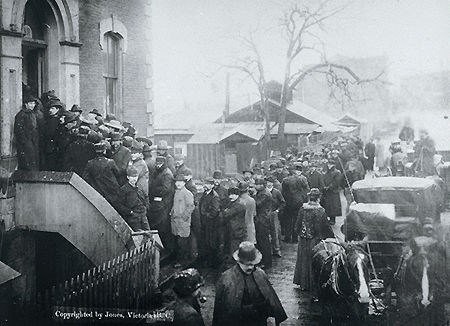
AUGUST 17, 1896
George Washington Carmack, Skookum Jim and Tagish Charlie discovered gold on Bonanza Creek, a tributary of the Klondike River. During the Klondike Gold Rush from 1897 to 1899 at least 100,000 people stampeded to the gold fields.
SEPTEMBER 01, 1905
Alberta and Saskatchewan entered Canada as the 8th and 9th provinces by two federal Acts which received royal assent on 20 July. Alberta's boundary with Saskatchewan was set at 110°, though Albertans wanted 107°. The Acts (Autonomy Bills) declared that the West was to have non-denominational schools.
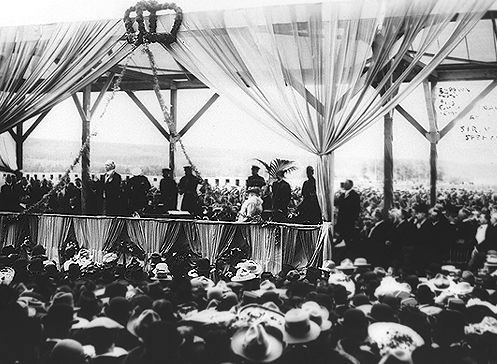
MAY 14, 1906
The Hydro-Electric Power Commission of Ontario was created, with Adam Beck as chairman. It was the first publicly owned electric utility in the world.
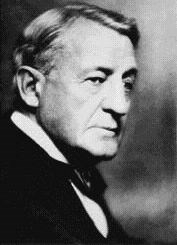
JANUARY 01, 1907
Charles Edward Saunders completed the development of Marquis wheat, a fast-maturing variety suited to the Prairies. It was first distributed to farmers in 1909 and greatly extended the area in which wheat could be grown. By 1920 it comprised 90% of the wheat grown on the Prairies.
FEBRUARY 23, 1909
John Alexander Douglas McCurdy (1886-1961) flew the aircraft the Silver Dart for about one kilometer at Baddeck, NS. It was the first powered flight of a heavier-than-air machine in Canada and the British Empire.
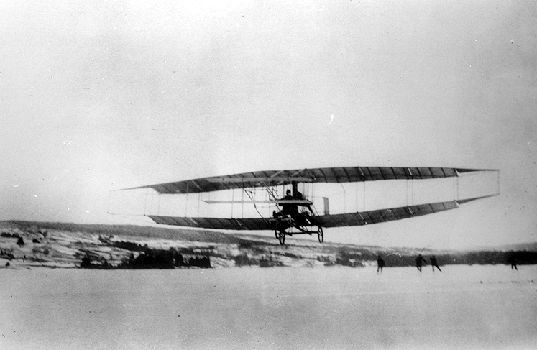
JANUARY 28, 1916
Women in Manitoba who are of British descent or citizenship, 21 or older, and not otherwise disqualified are given the right to vote provincially and to hold provincial office. Other provinces soon follow and grant women the right to vote in provincial elections.
APRIL 09, 1917
Battle of Vimy Ridge: On Easter Monday, four Canadian divisions and one British brigade captured Vimy Ridge, near Arras, France, with a loss of 3578 killed and 7000 wounded. It was a brilliant victory for the Canadians, who sensed a new national awareness.
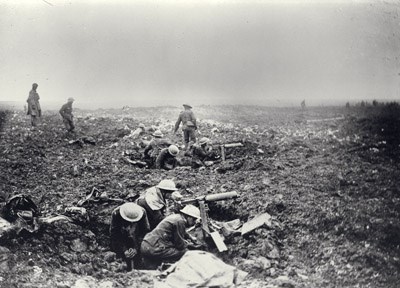
MAY 18, 1917
Sir Robert Borden announced his decision in Parliament to implement Conscription. The imposition of conscription on reluctant French Canadians was a failure and bitterly divided the country along French-English lines.

SEPTEMBER 20, 1917
Parliament passes the Wartime Elections Act. The right to vote federally now extends to women in the armed forces and female relatives of military men. However, Citizens considered of “enemy alien” birth and some pacifist communities are disenfranchised.
DECEMBER 06, 1917
Halifax Explosion: At Halifax, the French munitions ship Mont Blanc collided with the Belgian relief ship Imo. The resulting explosion, the largest before the advent of the atomic bomb, killed more than 1,600 people and injured 9,000 in Canada's worst disaster.
MAY 24, 1918
Women Granted Right to Vote in Federal Elections: Many Canadian women are granted the right to vote in federal elections, but First Nations women can only vote if they give up their status and treaty rights.
SEPTEMBER 08, 1918
Spanish Influenza Epidemic:
Possibly the most devastating epidemic in human history, which may have originated in Funston, Kansas, spread through Europe and the world, killing some 30 million people, including about 50 000 Canadians. The virus arrived with servicemen on board the ship Araguaya at Halifax. The first civilian outbreak in Canada occurred on September 8, 1918.
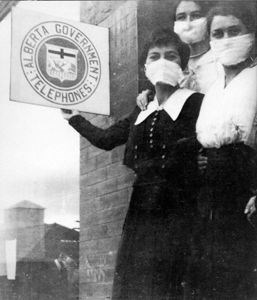
MAY 15, 1919
The Winnipeg General Strike, the largest strike in Canadian history, occurs. Between May 15 and June 25, more than 30,000 workers leave their jobs. The strike does not immediately improve job conditions, but it unites Canada’s working class.

MAY 07, 1920
Seven Toronto-based artists, frustrated with the conservatism of Canadian art, exhibit their work as the Group of Seven. Their interpretations of the Canadian landscape gain international attention and create a new artistic vision in Canada.
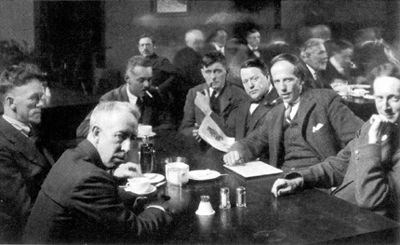
JULY 01, 1920
The Dominion Elections Act enfranchised many of those who had been disenfranchised during the First World War, such as those originating from countries with which Canada had been at war. However, the Act stated that anyone who was disenfranchised by provincial legislation because of race would remain disenfranchised from the federal vote. This included persons of Chinese origin in Saskatchewan, and those of Indigenous, Chinese, Japanese, and South Asian origins in British Columbia.
JULY 27, 1921
Frederick Banting and Charles Best at the University of Toronto first isolated insulin. The first diabetes patient was treated on 11 January 1922. Banting and J.J.R. Macleod received the Nobel Prize for their achievement.

www.thecanadianencyclopedia.ca/en/timeline/100-great-events-in-canadian-history




